In this article, we provide a roundup of flare stack suppliers, the stacks they produce and developments in the flare stack market, with an emphasis on the landfill gas, and biogas flare stack market. These are mostly enclosed flares for methane emission reduction and use during Energy from Waste plant downtime.
On This Page
- Flare Stack Companies in USA
- High-Pressure Air or Gas Flare
- Uniflare – Model UF10 Range – Flare Stack
- Gas Engines and Flare Stacks Services
- Flare Stack Design and Permitting Services
- Flare Systems for Industrial Plants
- Enclosed Ground Flares
- Flare Stack Height
- Why Flare Stacks in the First Place?
- Low-pressure Flare Operation.
- Flare Stack Height Sizing
- Gas Handling Equipment and Pipework Design
- Why Flares and Stacks are Important to Reduce Climate Changing Methane Emissions
- Flare System Companies in Texas
Flare Stack Companies in the USA and Europe
Many flare stack suppliers are operating in the flare stack systems market and conduct their businesses in the US and in the overall global market. The most active flare stack suppliers tend also to be the very best players in the global flare stack market. The majority supply biogas flaring systems and landfill gas flares which are installed at:
- Landfills,
- Wastewater facilities,
- Biogas digesters etc.
List of Flare Stack Suppliers
The following is a list of active flare stack suppliers:
1. Landfill Systems
Landfill Systems are flare stack suppliers that have built a strong reputation over the last 25 years for their flares which include some of the most flexible flares for old landfill sites which produce low-quality landfill gas at variable flow rates. Landfill Systems low-calorie flares are designed to continue to run on some of the lowest methane concentrations of any flare on the market.
This makes these flares a good buy for even high-quality landfill gas landfills where they will provide a long lifetime of reliable combustion even when in the years to come the methane content of the gas naturally reduces.
The company was established in 1995 to address the increased demand for electrical and mechanical engineering services produced by growth in the landfill gas renewable energy industry.
2. Combustion Research Associates
Combustion Research Associates, founded in 1993, is a multi-faceted engineering firm of flare stack suppliers led by skilled scientists and engineers.
Enclosed ground flares, open-raised flares, and speciality biogas and landfill flares are all produced by them. A portable flare stack is also included in the range.
CRA's flagship product is their Enclosed Ground Flare, offering low emission operation while adhering to even the most stringent requirements.
3. Biogas Technology Ltd
All gas-related process equipment, flare systems, gas boosters, de-watering, and piping solutions are available from Biogas Technology Ltd. Components or entire gas systems are available from this firm of flare stack suppliers.
Biogas Technology Ltd, founded in 1988, brings together the resources and experience needed to relieve landfill site operators of the risk, responsibility, and financial burdens they face, as well as to assist biogas emission site owners in capitalising on commercial prospects.

4. Flares and Stacks, inc.
Flares and Stacks, Inc. is a company that specialises in all aspects of gas flare systems, including flare system design, fabrication and construction, as well as flare system maintenance and repair. For the petrochemical sector, they provide comprehensive field services and combustion equipment maintenance technologies.
Flares and Stacks, Inc. have long been the industry leader in elevated combustion equipment field service, maintenance, and inspection.
This is a direct outcome of the industry's ongoing advancement of the status quo through enhancing techniques and technology that are becoming industry standard. They take pride in having a flawless safety record dating back to the company's inception in the 1990s.
5. Ennox Biogas Technology
Ennox biogas technology is regarded as one of the most innovative firms of flare stack suppliers in the fields of biogas treatment, gas storage, and gas flaring.
A maker of biogas flares for agriculture and landfills that are both durable and cost-effective. Provides highly advanced landfill gas flares and sewage gas flares for development and deployment. This firm produces a gas flare system that is ideal for the safe burning of flammable (and non-flammable) gases.
6. Liberty Flare LLC
Liberty Flare, LLC is a niche flare stack supply contractor that specialises in industrial flares and vent stacks maintenance, repair, inspection, installation, and design. Our highly trained team of professionals has over five decades of expertise operating at heights and is committed to safety, quality, honesty, and client satisfaction.
6. Aspire Energy Resources Inc.
Aspire Energy Resources Inc. boasts to have over 25 years of expertise in the energy business offering engineering, manufacturing, and maintenance services. They have professionals that can analyse customer demands and provide correct flare and vent stack design solutions.
7. AirScience Technologies Inc.
AirScience Technologies was founded in 1993 when two firms, one Canadian and the other American, merged. Biogas purification and upgrading, thermal oxidizers and flares, and gaseous resource valorization are among the services it provides.
It's a Montreal-based North American firm that creates Biogas Upgrading Systems and Equipment for biodigesters and landfill gas applications.
8. Hofstetter
Hofstetter is a renowned flare stack supplier, known to be experts in flaring technology and degassing systems across the world. The firm was founded in 1975 and has since installed over 1,600 systems all around the world.
The HOFGAS-Efficiency high-temperature gas flare burns landfill gas at a safe and ecologically favourable temperature. The exhaust gas emissions are guaranteed to be within acceptable limits.
- Automatic temperature control
- Combustion temperature 1,000 – 1,200°C
- Controlled and concealed combustion models
- Efficient combustion of landfill gas
- Residence time greater than 0.3 s
- Insulated combustion chamber
- Compatible with CDM projects.
9. Comcor
Comcor is regarded as a landfill gas management expert in all aspects. Since it was formed in 1985, the organisation has also supplied specialist waste management and environmental engineering services.
10. Howe Baker Systems
Self-supported, guy-rope-supported, and derrick-supported flare stacks, as well as offshore boom-mounted flares, portable flares, and demountable flares, are all available from Howe Baker. Howe Baker can also create specialty flares for specific applications.
11. Kotaminyak
Kotaminyak can provide both a vent stack without any attachments and a vent stack bundle that includes all of the necessary safety equipment. Packages are also available from Flare Internusa for a comprehensive solution.
High-Pressure Air or Gas Flare
Enclosed flares are available from custom manufacturers for both high and low-pressure gases. Enclosed flare specifications may include a 99.9% destruction efficiency. Minimal operating pressure, low NOx emissions, a high turndown flame, the use of propane, natural gas, or biogas as a pilot fuel, and a low operating noise level are all aspects of enclosed flares.
Flare gas is linked to modest velocities in regular venting scenarios, while high velocities are usual in transitory conditions. In addition, rapid reactions to flow changes, low-pressure loss, and precision are possible.
Vent steam pressure is used in pressure-assisted flares to increase the mixing of chemicals at the burner flare tips. A number of companies have started selling their own high-pressure drop burner flare tip designs. These are designs in which the vent stream pressure is sufficient. This type of flare may be used on streams that previously needed steam or air to produce smokeless products.
Uniflare – Model UF10 Range – Flare Stack
Uniflare's UFGTP gas train package line is a collection of gas flare systems available as a turnkey solution for gas handling and processing. All of the equipment and pipes necessary to connect an AD plant or Wastewater Treatment Plant Digester outlet to the CHP/boiler/gas upgrader/flare stack intake are included in the service. It also comprises all of the equipment needed to process and manage the gas, as well as transport it to its final destination under the specified intake conditions.
Gas Engines and Flare Stacks Services
Gas engines are engines that use biogas and landfill gas to produce methane, which is an oxidizable component produced by the bacterial decomposition of organic material.
As a result, these gases have comparable combustion characteristics, and gas engines are well-suited to effectively burn these fuels.
Drone flying has just been added to the list of flare stack services. Drones have been added to the list of emerging technologies that the oil and gas business is adopting. The Federal Aviation Administration has granted Total Safety, a Houston-based provider of safety and compliance services and solutions, an exemption. The exemption permits it to check flare stacks using an unmanned aircraft system, often known as a drone.
Flare Stack Design and Permitting Services
Gas components that cover the complete bandwidth of biogas equipment are being used by modern flare stack builders. Services for biogas stack design and permitting are available, including:
Flare Stack Design and Permitting Services start with digester equipment like the gas dome, manhole, and foam trap, it progresses to gas cleaning via gravel and ceramic fine filters, active carbon filters, and biogas dryers, and finally to the use of new technology like pressureless biogas storage systems, gasbags, and, of course, gas combustion in flare systems.
Since 1980, recognised leaders in the design, production, installation, and servicing of patented tip flare systems, flare stacks, ignition systems, and control devices have given comparable service. Rental services for compressors are also offered with some of these services.
Flare Systems for Industrial Plants
The most frequently used flare systems that flare stack suppliers advise for industrial operations are elevated flares and ground flares.
Several variables determine the type of flare used, including the availability of a suitable land area distant from receptors sensitive to flare temperature, the danger of flare grounding, flare noise, and air pollution from flue off-gas.
Engineers have devised optimum and flexible system solutions for the combustion of industrial gases, including all essential gas treatment, gas storage, and pressure booster systems.
Enclosed Ground Flares
When using enclosed ground flares, the biogas is combusted in a concealed flame in enclosed ground flares, which have a shroud.
The best of these have a low noise characteristic and emit extremely low odour emissions. This enables operating in congested places while protecting sensitive environments.
Gas from the fermentation of all wastes, as well as mineral source gases such as natural gas, LPG, biogas, landfill gas, syngas, CBM gas, producer gas, vapours, and other flammable gases, can be removed by using a smokeless and invisible flame at ground level.
Flare Stack Height
Typically, the flare stack height is calculated using one of two API 521 methods: the “basic method” or the modified Brzustowski technique. The permissible heat radiation intensity at ground level or a predetermined site, as well as the location of the flame centre, are used to determine the flare stack height.
For applications needing small stack heights (up to 100 ft overall), this is the simplest and most cost-effective design; however, as the flare height and/or wind loads grow, the diameter and wall thickness required become quite big and expensive.
Why Flare Stacks in the First Place?
Millions of tonnes of rubbish and other waste are dumped in landfills throughout the world every year. That's a lot of methane, which contributes to global warming. The most important strategy to prevent global warming is to use gas flare providers and gas flaring.
In terms of the greenhouse gas heating effect on our planet, flaring transforms methane into carbon dioxide, which is roughly one-eighth as strong and destructive as the methane in these gases.
The COP26 Summit in Glasgow in November 2021 established a key goal of much-increased methane flaring.
Landfill gas flaring will be enforced by environmental regulatory organisations all over the world.
To minimise unlawful methane emissions, temporary replacements for flare stacks undergoing repair will be necessary.
The only method that can enable fully portable real-time monitoring to prove regulatory compliance is real-time flare gas monitoring using modern trailer-mounted instrumentation devices.
In today's market, flare stack purchasers must find a dependable source for their needs. If a country wants to trade flare stacks with another country, it should go to the marketplace for a dependable and reasonably priced flare stack provider.
Flare stacks are common in areas where oil, gas, and chemical industries are plentiful. Flare stacks can be found in a variety of locations, including oil refineries, chemical industries, oil and gas drilling activities, and waste disposal sites.
Low-Pressure Flare Operation
Low-pressure flare operation had been severely constrained until recently due to the inability to maintain a flame while using low calorific landfill gas. The flares offered by Landfill Systems in the United Kingdom demonstrate that any landfill site with a typical gas flare can now generate electricity and heat.
Flaring is part of current standard safety engineering design practice to assist in guaranteeing built-up pressure has a means to be managed, minimising immediate hazard to persons and facilities, and some gas may be flared as an operational safety measure.
As a result, flare stack suppliers say that it is critical to double-check that the pilot is always lit. The main aim of a flare stack in an industrial facility is to provide safety by shielding pressure vessels or pipelines from overpressuring due to unanticipated operational disruptions.
Most operations place a strong focus on purge reduction since it leads to continuous emissions numbers. For onshore low-pressure flares, molecular sealants have been successfully employed to lower the needed purge rate by up to tenfold, albeit at the price of something else, such as more flare tip maintenance.
Flare Stack Height Sizing
To meet safety concerns like heat radiation temperatures and flue gas dispersion, flare stack height must be properly designed. Thermal radiation is frequently used to determine flare stack height and placement, as well as the size of the restricted-access area surrounding the flare.
The stack should also be structurally robust, and able to endure wind, earthquakes, and other unanticipated loads. Appendix c of API standard 521 describes how to size a flare stack.
A ‘condensate knock-out drum (KoD) is used to remove condensates. The gases are then directed to a vertical flare stack, which may reach a height of 32 to 320 feet.
Gas Handling Equipment and Pipework Design
The key aspect of the design is to recognize that biogas handling equipment operates as a system. This sector of gas suppliers in the Handling Equipment industry ranges from gas-specific purifiers and contaminant traps to liquid analyzer filters and molecular sieves.
Why Flares and Stacks are Important to Reduce Climate Changing Methane Emissions
The major source of human-caused methane emissions is municipal solid waste dumps. Simultaneously, landfill methane emissions represent a missed chance to capture and utilise a huge energy resource. Landfill gas is a fuel that may be used to replace natural gas or other carbon-based fuels.
Methane is an extremely powerful “greenhouse” gas. It contributes 21 times as much to global warming as carbon dioxide. In North America, landfills account for over 40% of anthropogenic methane emissions. These gases' volatile organic compounds react with nitrous oxides to generate ozone, which is a major cause of smog. Methane is particularly dangerous since it is explosive in quantities of between 5% and 15% by volume.
On the plus side, landfill gas is a medium-BTU energy source that may be utilised to create electricity in motors or turbines, or directly to manufacture steam, or to power other industrial equipment like boilers, furnaces, or evaporators.
Such applications also reduce the requirement for nonrenewable energy resources to be used, potentially delaying the need for new power plants. Other high-BTU applications of landfill gas and biogas include the generation of compressed natural gas (CNG) and LNG for storage, transportation, and car fuel.
Enclosed combustion reduces flame and noise to near-inaudible levels, which is why these flares are favoured. Progeco srl is an Italian company situated in Brescia (BS). Biogas flare stacks are part of the Biogas Flare Stacks product range.
Flare System Companies in Texas
Flare systems are widely used in Texas, and there are several flare system firms.
Most of the world's oil majors, as well as the world's largest engineering contracting organisations, are based in Texas. Their engineers create flare systems for a wide range of flaring applications, including high-pressure, low-radiation sonic flare tips, steam-assisted smokeless flares, completely enclosed ground flares, and flare support structures up to 200 metres tall.
In Texas, the biogas and enclosed flare system market is still in its infancy. A report on flare stack suppliers can assist with the analysis. Texas and global biogas flare system market growth aspects are of great interest.
This article report includes vital industry statistics and serves as a significant source of advice and direction for businesses and people interested in the gas flare supplier market.
A thorough biogas flare system manufacturing cost analysis and a biogas flare system raw materials analysis are provided for seven important firms.
The environmental record of Texas companies is not good. Faced with a pipeline shortage in rural South Texas, companies bleed off the gas into flares. They release air pollutants and greenhouse gases in amounts that collectively rival the output of a half-dozen oil refineries.
Frequently Asked Questions
1. What Are Flare Stacks?
Flare stacks are devices used to burn off flammable gas released by pressure relief valves during unplanned over-pressuring of plant equipment in industries such as oil and gas, chemical plants, and refineries. They are essential for safety, environmental protection, and regulatory compliance.
2. Why Choose Flare Stack Suppliers from the USA and Europe?
Suppliers in the USA and Europe are among the most active and reputable in the global market. They offer a wide range of products, including biogas flaring systems and landfill gas flares, designed for various applications such as landfills, wastewater facilities, and biogas digesters.
3. How Do I Select the Right Flare Stack Supplier?
Consider the supplier's experience, reputation, range of products, and services offered. Suppliers like Landfill Systems, Combustion Research Associates, and Biogas Technology Ltd have years of expertise and provide customized solutions tailored to specific industry needs.
4. Can Flare Stacks Operate with Low Methane Concentrations?
Yes, some suppliers like Landfill Systems specialize in flares that can operate on low methane concentrations, making them suitable for older landfill sites with variable gas quality and flow rates.
5. What Innovations Are Present in Flare Stack Technology?
Companies like Ennox Biogas Technology and Liberty Flare LLC offer advanced solutions in biogas treatment, gas storage, and flaring. Innovations include durable and cost-effective biogas flares, enclosed flares with high destruction efficiency, and portable flare systems for flexibility.
6. What Services Do Flare Stack Suppliers Provide Beyond Equipment?
Many suppliers offer comprehensive services including design, fabrication, installation, maintenance, and repair of flare systems. For example, Flares and Stacks, Inc. specializes in combustion equipment maintenance and inspection, highlighting a commitment to ongoing support and safety.
7. How Are Environmental Concerns Addressed?
Flare stack technology aims to minimize environmental impact by converting harmful methane into less harmful carbon dioxide. Innovations in flare technology and flare gas recovery systems have significantly reduced emissions, contributing to global efforts to combat climate change.
8. What Is the Importance of Flare Stack Height and Design?
Flare stack height and design are crucial for safety, efficiency, and environmental compliance. Factors like heat radiation, flue gas dispersion, and structural stability against wind and seismic activity are considered in the design process to ensure optimal performance.
9. How Do Flare Stacks Contribute to Renewable Energy Initiatives?
By converting landfill and biogas into energy, flare stacks play a role in renewable energy initiatives. They enable the capture and utilization of methane—a potent greenhouse gas—for electricity generation, reducing reliance on fossil fuels and mitigating global warming.
10. Why Is Gas Flaring Regulation Important?
Regulation ensures that flaring is conducted safely, efficiently, and with minimal environmental impact. Compliance with regulations helps prevent uncontrolled methane emissions, contributing to global efforts to reduce greenhouse gases and combat climate change.
[First published Nov 16, 2021. Minor updates and FAQs added 3 April 2024.]
Food Waste Depackaging Systems for Sustainability and Microplastic Reduction
Food Waste Depackaging systems are increasingly being designed for sustainability and microplastic reduction which many would say is vital for the survival of our planet. Many people are interested in the rapidly growing anaerobic digestion sector, which uses mechanical equipment called depackagers or separators, to produce contaminant-free food waste slurries that may be piped into […]
Energy From Waste by Incineration: Why a Modern Incinerator is Not a Health Risk
Making Energy from Waste by incineration should not still be accused of being a significant threat to the health of nearby residents. We wish to explain why a modern incinerator is not a health risk. Concerns about pollution and particularly the discharge of trace amounts of dangerous substances into the area around an incinerator are […]
Recycling Facts: The BIG List!
Waste Incineration Plants (also known as WtE facilities) should not be installed as a replacement for material recycling. WtE is designed to complement recycling programs because not all waste is feasible to recycle. Incineration is an engineering process that uses thermal decomposition in a highly oxidative environment to decompose organic molecules into simple compounds, predominantly […]
Integrated Waste Management
This is the final solution ( if good competitive markets become established in these materials ), to the issue of handling MSW in an economical and sustainably reasonable way. From this realization, has recently, appeared the idea of Integrated Waste Management ( IWM ). IWM is the integration of different waste treatment strategies to reach […]
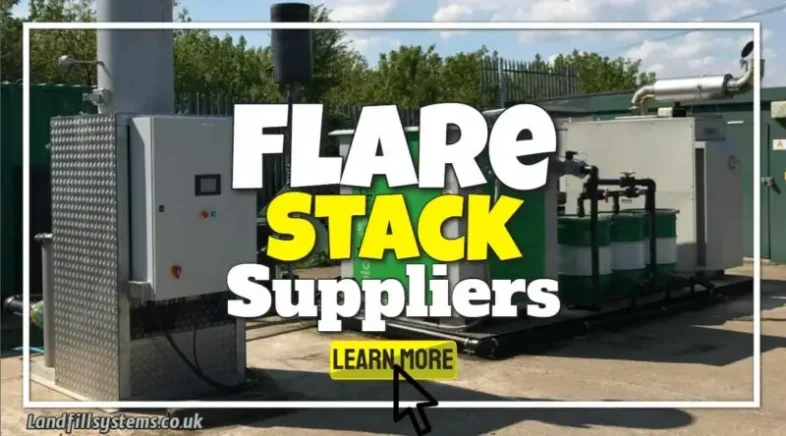

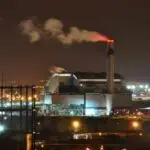
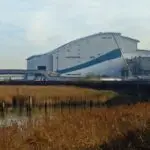
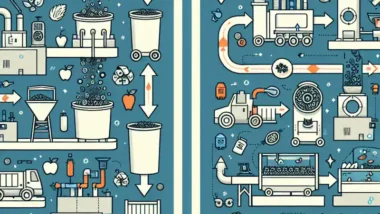
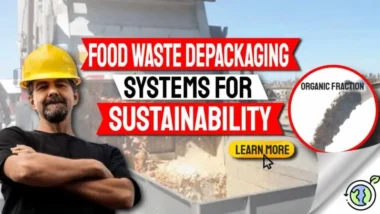

Please, i need the current cost of flare stack supply to Nigeria
Nosa: You need to give us permission to publish your email address if anyone is going to be able to contact you. Editor